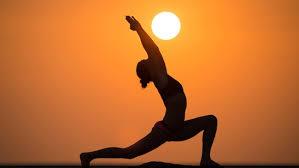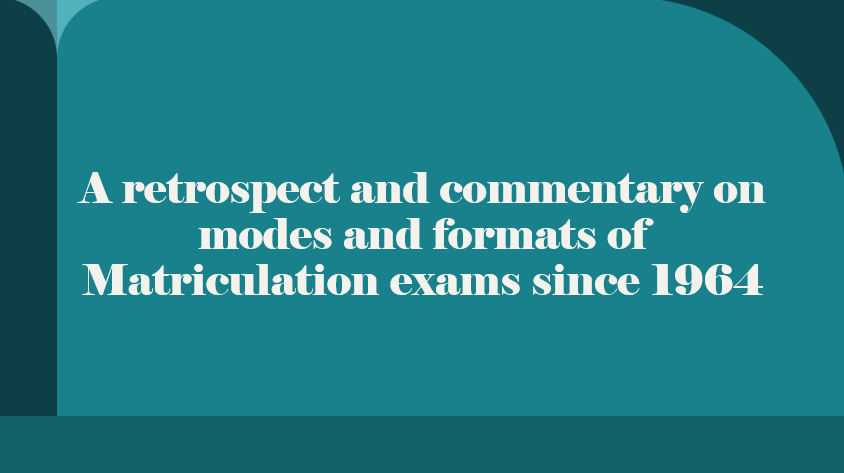Yoga in Myanmar: A Journey of Mind, Body and Spirit
Posted_Date
Image

Body
Evolution of Yoga
Yoga’s history is deeply rooted in ancient India, with origins possibly dating back over 5,000 years to the Indus-Sarasvati civilization. The earliest written records appear in the Vedic texts, around 1500 BCE. Over time, Yoga evolved into a system of physical, mental and spiritual practices, passed down through generations. Patanjali’s Yoga Sutras, around 200 BCE, provided a comprehensive framework, including the Eight Limbs of Yoga, which are still relevant today. The classical form of Yoga, as outlined by Patanjali in the Yoga Sutras, is known as Ashtanga Yoga, also referred to as Raja Yoga or the Eight-Limbed Path. It’s a holistic system encompassing physical, mental and spiritual practices, aiming for self-realization.
These eight limbs of Ashtanga Yoga are:
1. Yama: Ethical guidelines and restraints.
2. Niyama: Self-disciplinary practices.
3. Asana: Physical postures.
4. Pranayama: Breath control techniques.
5. Pratyahara: Withdrawal of senses from the external world.
6. Dharana: Concentration.
7. Dhyana: Meditation.
8. Samadhi: State of absorption or union with the divine.
In contemporary Bharat, several figures have significantly developed the understanding and practice of Yoga from ancient traditions, while also adapting them to modern contexts. Some prominent names include Swami Vivekananda, Sri Aurobindo, B K S Iyengar, Sri Ravi Shankar and so on. Swami Vivekananda is widely regarded as a key architect of the revival of Yoga in the late 19th and early 20th centuries. He brought the philosophy and practices of Yoga to the West, introducing it to a broader audience and emphasizing its practical aspects for spiritual growth and social reform. His speeches and writings, particularly his 1893 address at the World’s Parliament of Religions, were remarkable. He also developed his own interpretations of Yoga, incorporating elements of Vedanta and other Hindu philosophies. He presented four distinct yet interconnected paths of Yogas, towards spiritual realization and self-discovery: Karma Yoga (the path of action), Bhakti Yoga (the path of devotion). Raja Yoga (the path of concentration and discipline) and Jnana Yoga (the path of knowledge). Each yoga has a unique approach to realizing the divine within, and Vivekananda believed that all four are equally valid paths to enlightenment.
Sri Aurobindo’s “Integral Yoga” offered a comprehensive approach to spiritual evolution, encompassing physical, mental and spiritual development. He integrated Yoga with his larger philosophy of human evolution and the development of a higher consciousness.
With time, many thinkers, philosophers and teachers propagated and promoted Yoga across the Globe with their unique styles. Society values its importance in its day-to-day life.
Impact of Yoga on Well-being
Yoga has significantly evolved and become a prominent part of contemporary wellness practices, moving beyond its traditional roots to encompass diverse styles and applications, each offering unique benefits and approaches. Some of the most common types include Hatha Yoga, Vinyasa, Ashtanga Yoga, Mantra Yoga, Kriya Yoga and so on. These styles differ in their focus on physical postures, breathwork, meditation and energy flow. It’s increasingly recognized for its benefits in stress reduction, promoting mental and physical health and fostering a sense of balance and well-being. Modern Yoga is also integrated into various settings, including schools, corporations and healthcare systems, reflecting its growing relevance in addressing the needs of the modern world.
Yoga is important because it offers numerous physical, mental and emotional benefits, improving overall well-being and promoting a healthier lifestyle. It’s a practice that can help individuals manage stress, enhance flexibility and strength and even improve sleep quality.
The numerous benefits of Yoga offer a holistic development of an individual in the following way:
Physiological Benefits:
• Improved Flexibility and Strength:
Yoga poses (asanas) target various muscle groups, enhancing flexibility and building strength.
• Reduced Risk of Injury:
Increased flexibility and body awareness can help prevent injuries, especially in sports and other physical activities.
• Better Posture and Balance:
Yoga can improve posture, balance and coordination, leading to physiological benefits like better body alignment and stability.
• Improved Cardiovascular Health:
Regular Yoga practice can help lower blood pressure and heart rate, potentially reducing the risk of heart disease.
• Pain Management:
Yoga can be effective in managing various types of chronic pain, such as back pain and arthritis.
Psychological and Emotional Gains:
• Stress Reduction:
Yoga’s emphasis on breathing and mindfulness can help calm the mind and reduce stress hormones.
• Improved Sleep:
Yoga can help relax the body and mind, making it easier to fall asleep and stay asleep.
• Enhanced Mental Clarity and Focus:
Yoga can improve concentration and attention, leading to better cognitive function.
• Emotional Regulation:
Yoga can help individuals become more aware of their emotions and develop healthy coping mechanisms.
• Increased Mindfulness and Self-Awareness:
Yoga fosters a sense of being present in the moment, which can lead to greater self-awareness and improved decision-making.
Path to Inner Awakening:
• Connection to Self and Others:
Yoga encourages a deeper understanding of oneself and one’s place in the world, promoting a sense of inter connectedness.
• Cultivation of Inner Peace and Harmony:
Yoga can help individuals find inner peace and cultivate a sense of balance and harmony in their lives.
Therefore, Yoga is a valuable practice that can enhance physical, mental, and emotional well-being. Its benefits extend beyond physical exercise, offering a holistic approach to health and wellness. It helps an individual to grow and nurture from the Gross to the subtle.
Yoga and Myanmar: The Connection
Yoga has a deep connection with Myanmar’s cultural landscape due to the shared. historical ties with India, where Yoga originated. Myanmar, the land of meditation, emphasizes mindfulness, inner peace and self-discipline. Yoga is becoming increasingly popular in Myanmar, with a number of Yoga studios and centres opening in different cities like Yangon, Bago, Nay Pyi Taw, Bagan, Mandalay, Sittway, etc.
Myanmar is my fourth posting from the Indian Council for Cultural Relations (ICCR) & the Ministry of External Affairs to promote Yoga. The previous countries included- Hungary, Bosnia & Herzegovina, Cambodia, and New Zealand. I have noticed that the people of Myanmar have a keen interest in knowing the Classical form of Yoga from the Yoga texts. Like any other country, they have a deep interest in staying healthy and active. More than 200 Yoga enthusiasts have joined my Yoga classes at the SVCC, Embassy of India in Yangon. The beautiful parks and gardens across Yangon, like Mahabandoola Park, People’s Park, and Kandawgyi Lake, offer an interesting and fresh atmosphere for fitness enthusiasts to practise Yoga, Pilates, Zumba and other healthy activities in large groups. The serene atmosphere in pagodas like Sule Pagoda and Shwedagon Pagoda allows the local people of Myanmar to disconnect from the outside world and connect with the Self. These strong techniques help the local people to balance their thoughts and emotions to face the different problems and situations of life.
As Buddhism spread from India to Myanmar, it carried forward techniques of mindfulness and concentration that complement the science of Yoga. In essence, meditation serves as a profound path to cultivate mindfulness, inner awareness and overall well-being. Yoga evolved as a system for self-realization during the Vedic period, while meditation practices gained prominence with the rise of Buddhism. Both Yoga and meditation in Myanmar emphasize cultivating mindfulness and deep inner awareness. In Yoga, mindfulness is developed through postures, breath control, and meditation, fostering a connection between the body and mind. Similarly, meditation practices in Myanmar, such as Vipassana (insight meditation), centre on observing the present moment with clarity and understanding the true nature of reality. Yoga in Myanmar is gaining popularity as Myanmar’s predominantly Buddhist culture provides a unique context for Yoga practice, with opportunities to integrate Yoga with meditation and spiritual practice. The Embassy of India (SVCC) in Yangon has organized several International Yoga Day celebrations across the country, and many health enthusiasts actively participate in these initiatives. This year, we are celebrating the 11th International Day of Yoga 2025 with the theme “Yoga for One Earth, One Health”, which highlights Yoga’s role in promoting physical, mental and environmental well-being, aligning with global calls for sustainability and unity. The Embassy of India is planning different events to celebrate this year’s International Day of Yoga.
Significance of Yoga for the people of Myanmar
Yoga is gaining significance in Myanmar as a tool for physical and mental well-being, offering benefits like stress reduction, improved flexibility and a deeper connection to the body and mind. It is a way to promote health, prevent disease and cultivate inner peace, aligning with Myanmar’s Buddhist traditions and emphasis on mindfulness. The following are the key benefits which individuals are experiencing in different dimensions:
• Physical Dimension:
Yoga practices can improve physical health by increasing flexibility, strength, and balance. They can also help with managing stress, which is a major factor in many lifestyle-related disorders.
• Mental Dimension:
Yoga’s emphasis on mindfulness and meditation can help reduce stress, anxiety, and depression. It promotes a sense of calm and inner peace, which can be particularly beneficial in a society that values spiritual well-being.
• Spiritual Dimension:
Yoga’s roots, in ancient Indian traditions, including its focus on self-discipline and inner awareness, connect well with Myanmar’s Buddhist culture and its emphasis on meditation and mindfulness. Yoga can deepen understanding of the nature of life and cultivate inner peace, which is valued in Myanmar’s spiritual traditions.
• Social and Cultural Significance:
Yoga is increasingly being recognized as a practice that can promote harmony and well-being in all aspects of life. It’s also becoming a more accessible practice, with yoga studios and instructors becoming more common in Myanmar.
International Recognition:
The celebration of the International Day of Yoga in Myanmar highlights its growing significance and the global recognition of its benefits.
Yoga is therefore gaining popularity in Myanmar and is viewed as a way to promote physical, mental and spiritual well-being. It is often practised in conjunction with meditation, reflecting the influence of Buddhism in the country. Yoga studios and retreats are becoming more common, offering a variety of classes and workshops for different levels of practitioners.
My personal experience in Myanmar so far is a blend of ancient history, vibrant culture, and natural beauty, but the best part about Myanmar is its beautiful people. The love and warmth which I receive from my Yoga students is overwhelming.
GNLM






